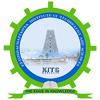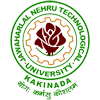CSE - Vision & Mission
To be a Center of Excellence in producing Computer Science and Engineering professionals and innovators of international standard, primarily fulfilling the requirements of booming IT industry, for the economic development of the nation and develop research.
- To impart proactive education that focuses on intellectually vibrant instructions, sound practical training and project-based learning.
- To prepare the students for high-quality research and industry oriented innovation.
- To prepare the students for immediate career success and lifelong challenges in global industrial needs.
Faculty Details
| S.NO | NAME | QUALIFICATION | DESIGNATION |
| 1 | Dr.J.V.ANIL KUMAR | M.Tech Ph.D | PROFESSOR & HOD |
| 2 | Dr.SK.ALTHAF HUSSAIN BASHA | M.Tech Ph.D | PROFESSOR ,R& D Co-Ordinator |
| 3 | Dr.P.V.RAVI KUMAR | M.Tech Ph.D | PROFESSOR |
| 4 | Dr.Y.SRINIVAS | M.Tech Ph.D | PROFESSOR |
| 5 | Mr.CH.JAYARAMULU | M.Tech (Ph.D) | ASSOC PROFESSOR |
| 6 | Mr.M.GNANA VARDHAN | M.Tech (Ph.D) | ASSOC PROFESSOR |
| 7 | Mrs.A.AMRUTHA VALLI | M.Tech (Ph.D) | ASSOC PROFESSOR |
| 8 | Mr.E.RAJESH | M.Tech (Ph.D) | ASSOC PROFESSOR |
| 9 | Mr.P.PULLAIAH | M.Tech (Ph.D) | ASSOC PROFESSOR |
| 10 | Mrs.R.DEEPTHI | M.Tech (Ph.D) | ASSOC PROFESSOR |
| 11 | Mr.S.V.PAVAN KUMAR | M.Tech (Ph.D) | ASSOC PROFESSOR |
| 12 | Mr.P.NEELAKANTESWARA | M.Tech (Ph.D) | ASSOC PROFESSOR |
| 13 | Mr.Y.SUDHEER KUMAR | M.Tech (Ph.D) | ASSOC PROFESSOR |
| 14 | Mr.R.SRINIVASULU | M.Tech | ASST PROFESSOR |
| 15 | Mrs.S.V.NAGA LAKSHMI | M.Tech | ASST PROFESSOR |
| 16 | Mr.G.MAHESH | M.Tech | ASST PROFESSOR |
| 17 | Mr.T.UDAY KIRAN | M.Tech | ASST PROFESSOR |
| 18 | Mr.M.SRINIVASA REDDY | M.Tech | ASST PROFESSOR |
| 19 | Mr.M.JAGADISH REDDY | M.Tech | ASST PROFESSOR |
| 20 | Mr.CH.UDAY | M.Tech | ASST PROFESSOR |
| 21 | Mrs.M.TEJASWINI | M.Tech | ASST PROFESSOR |
| 22 | Mr.R.YASWANTH KUMAR | M.Tech | ASST PROFESSOR |
| 23 | Mr.R.GIRISH KKUMAR | M.Tech | ASST PROFESSOR |
| 24 | Mrs.SK.YASMIN SULTHANA | M.Tech | ASST PROFESSOR |
| 25 | Mr.Y.SANJAY RAGHAVENDRA | M.Tech | ASST PROFESSOR |
| 26 | Mr.K.SUDHAKARUDU | M.Tech | ASST PROFESSOR |
| 27 | Mr.P.VENKATESH | M.Tech | ASST PROFESSOR |
| 28 | Mr.V.NARAYANA RAO | M.Tech | ASST PROFESSOR |
| 29 | Mr.S.V.LAKSHMAN RAO | M.Tech | ASST PROFESSOR |
| 30 | Mr.M.SRI HARSHA | M.Tech | ASST PROFESSOR |
| 31 | Mr.T.GOWTHAMI | M.Tech | ASST PROFESSOR |
| 32 | Mr.P.V.ANIL KUMAR | M.Tech | ASSOC PROFESSOR |
| 33 | Mr.A.V.R.M.AJAY | M.Tech | ASST PROFESSOR |
| 34 | Miss.V.AISWARYA | B.Tech (M.Tech) | ASST PROFESSOR |
| 35 | Miss.S.SUSHMA RANI | B.Tech (M.Tech) | ASST PROFESSOR |
| 36 | Miss.K.PRIYANKA | B.Tech (M.Tech) | ASST PROFESSOR |
| 37 | Miss.S.V.S.SUCHARITHA | B.Tech (M.Tech) | ASST PROFESSOR |
| 38 | Miss.V.KRANTHI BHAVANA | B.Tech (M.Tech) | ASST PROFESSOR |
| 39 | Miss.S.USHA RANI | B.Tech (M.Tech) | ASST PROFESSOR |
| 40 | Miss.SK.AFROZ SULTHANA | B.Tech (M.Tech) | ASST PROFESSOR |
|
S. NO. |
NAME OF THE STAFF |
DESIGNATION |
QUALIFICATION |
||
|
1 |
Mr. M. Sudhakar |
System Administrator |
Degree (BSC) | ||
|
2 |
Mr. P. Srikanth |
Lab Assistant |
I.T.I | ||
|
3 |
Mr.G. Naveen |
Programmer |
B.Tech (CSE) |
||
|
4 |
Mr. R. Mahesh |
Programmer |
B.Tech (ECE) |
| S.No | Room No. | Laboratory Name | Description of Lab | Area (m2) | Cost (Rs.) |
|---|---|---|---|---|---|
| 1 | Information Technology and Work shop Lab | 3,16,642 | |||
| 2 | Computer Programming Lab | 7,24,508 | |||
| 3 | Python Programming Lab | 5,70,011 | |||
| 4 | Object Oriented Programming Through C++ Lab | 3,16,642 | |||
| 5 | Java Programming Lab | 5,70,011 | |||
| 6 | Data Structures & Advanced Data Structures Lab |
|
2,29,149 | ||
| 7 | Object Oriented Ananlysis & Design Lab | 5,70,011 | |||
| 8 | Database Management Systems Lab | 7,46,58,692 | |||
| 9 | Software Testing Lab | 7,46,58,692 | |||
| 10 | Os & Linux Lab / Network Programming Lab |
3,16,642 | |||
| 11 | Data Warehousing & Mining Lab | 3,16,642 | |||
| 12 | Advanced Java and Web Technologies Lab | 3,04,301 | |||
| 13 | Software Architecture & Design Patterns Lab | 3,16,642 | |||
| 14 | Mobile Application Development | 3,16,642 |
The IT Workshop for engineers will learn about the modules, including training on PC Hardware, Internet, World Wide Web and Productivity tools including Word, Excel, PowerPoint and Publisher.
PC Hardware introduces the students to a personal computer and its basic peripherals, the process of assembling a PC, installation of System Software MS-Windows, Linux and the required device drivers.
In addition hardware and software level troubleshooting process, tips and tricks would be covered. Internet & WWW module introduces the different ways of hooking the PC on to the internet from home and workplace effectively usage of the internet. Usage of web browsers, e-mails, news groups and discussion forums would be covered. In addition, awareness of cyber hygiene, i.e., protecting the personal computer from getting infected with the viruses, worms and other cyber attacks would be introduced.
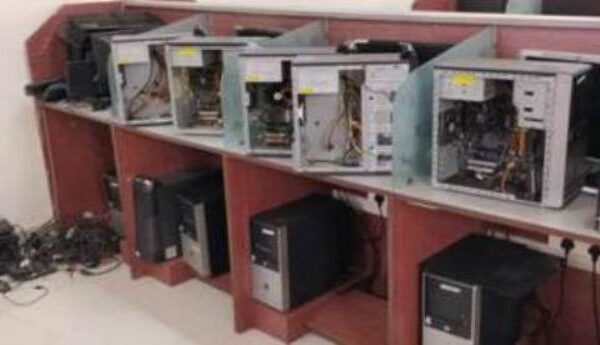
C is an procedural systems implementation language. It was designed to be compiled using a relatively straightforward compiler, to provide low-level access to memory, to provide language constructs that map efficiently to machine instructions, and to require minimal run-time support.
C was therefore useful for many applications that had formerly been coded in assembly language.
We can learn in depth in the c language in our course curriculum.
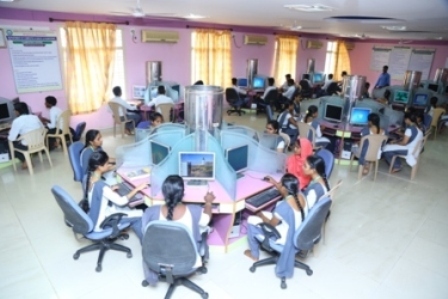
In this lab, students will try out some new ideas in this new programming language. Python is a scripting language that was invented relatively recently, and it was designed above all else to be easy to use and easy to learn, while also being very powerful. Python is also designed to let you communicate easily using programs. There is a saying in python that “readability counts”. In other words, your programs should be self-documenting. The language designers want you to write programs that are simple and easy to understand. They have included a number of interesting language features to help make that possible.
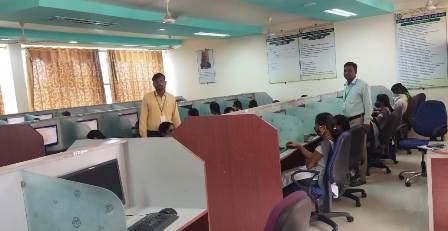
C++ is one of the most widely used programming languages. Its features (abstraction, encapsulation. Data hiding etc) and flexibility have made it still the leading choice for most of the areas of application, especially in the software development environment. This lab emphasises on the regular curriculum materials as well as some advanced real life applications implemented as practical’s. These practical’s, written in the spirit of learning by doing, are designed to give students a working knowledge of the C++ programming language.

Java is a object oriented programming language. Most widely used programming languages. Its features (abstraction, encapsulation, Inheritance& Data hiding etc) and flexibility have made it still the leading choice for most of the areas of application, especially in the software development environment. This lab emphasises on the regular curriculum materials as well as some advanced real life applications implemented as practical’s. These practical’s, written in the spirit of learning by doing, are designed to give students a working knowledge of the Java programming language. It is a platform independent
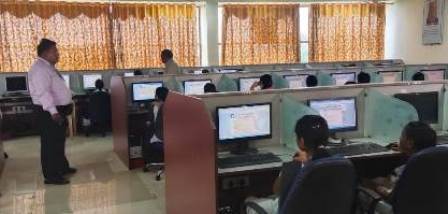
This lab serves as a guide for learning and implementing the data structure in a programming language. It basically deals with memory management and various other operations on data with algorithm analysis and design. It helps to implement new algorithm or modify the existing ones according to the requirement. The Lab is well equipped with all advanced software’s for practical applications.
The aim of the course is to teach students abstract data types and dynamic data structures. Students use different type of data structures to model real world aggregations of data.
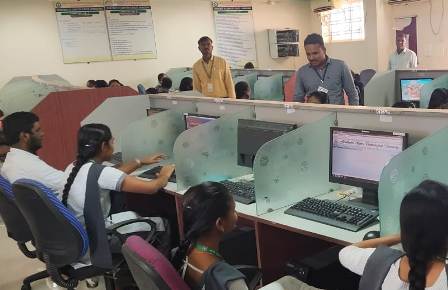
This lab is to draw standard UML diagrams using an UML modeling tool for a given case study and map design to code and implement a 3 layered architecture. Test the developed code and validate whether the SRS is satisfied. In this lab student Identifies software system that is to be developed, prepares the SRS, and identifies use cases , derives a Class Diagram. Using the identified scenarios, find the interaction between objects and represent them using UML Sequence and Collaboration Diagrams, State Chart and Activity Diagrams. Implement the system as per the detailed design, and tests it as per Use case.
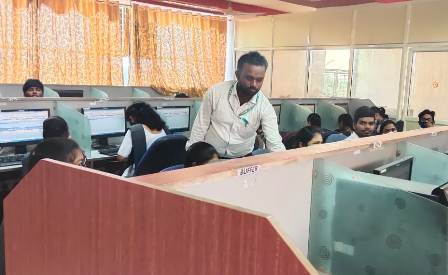
A database management system (DBMS) is computer application software that provides a way to manage data. The requirement of modern days is to have an automated system that manages, modifies and updates data accurately. This is achieved by a DBMS in robust, correct and non redundant way. DBMS lab aims at practicing and achieving this aim by using various software’s such as SQL, ORACLE, and MS ‐Access etc. All these require a thorough practice of various DDl, DCL and DML queries.

In this lab, students gain the required knowledge to develop websites, maintenance, a complete life cycle of a website. Under this lab students do practice on following concepts:
HTML,DHTML,JSCRIPT,XML,PHP,RUBY,JAVA BEANS,SERVLETS,JSP,AJAX.

Operating System Lab: OS provide the basic functionality on every computer that allows any type of application software to be run. For computer science students it is crucial to know and understand the principal concepts and mechanisms of operating systems. This understanding helps them to efficiently use programming languages to develop software built on top of the operating system. This also applies to people working in other fields related to information technology, who could benefit greatly from a deeper knowledge of operating system internals.
Linux Lab: By the end of course students will understand the fundamentals of the Linux operating system and be able to apply that knowledge in a practical and useful manner.
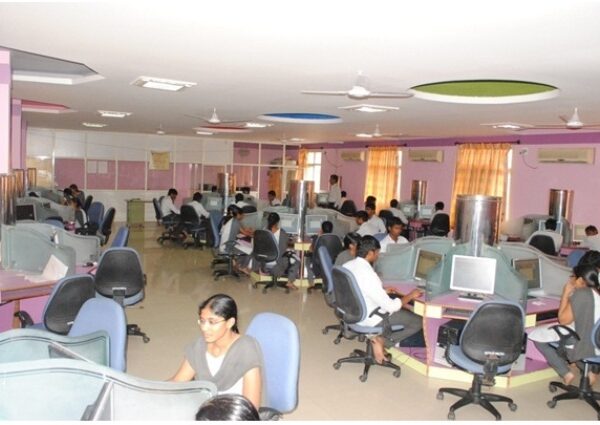
A computer network is a system in which multiple computers are connected to each other to share information and resources. Computers can be part of several different networks. Networks can also be parts of bigger networks. The local area network in a small business is usually connected to the corporate network of the larger company. These connections may allow access to the Internet, for example to show computers in a store, display its catalog through a web server, or convert received orders into shipping instructions.

Software Testing is a method to check whether the actual software product matches expected requirements and to ensure that software product is Defect free. It involves execution of software/system components using manual or automated tools to evaluate one or more properties of interest. The purpose of software testing is to identify errors, gaps or missing requirements in contrast to actual requirements. we perform White Box and Black Box Testing. In simple terms, Software Testing means the Verification of Application Under Test (AUT).
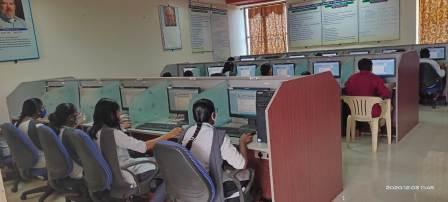
Data Warehouse: A Data Warehouse refers to a place where data can be stored for useful mining. It is a computer system with huge data storage capacity. Data from the various organization’s systems are copied to the Warehouse, where it can be fetched and conformed to delete errors. Here, advanced requests can be made against the warehouse storage of data.
Data Mining: Data mining refers to the analysis of data. It is the computer-supported process of analyzing huge sets of data that have either been compiled by computer systems or have been downloaded into the computer. In the data mining process, the computer analyzes the data and extract useful information from it. It looks for hidden patterns within the data set and try to predict future behavior. Data mining is primarily used to discover and indicate relationships among the data sets.
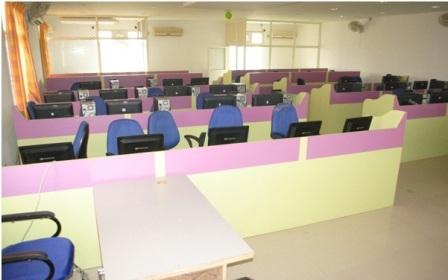
Designing software is an integral part of engineering a software product.Effectively designed software ensures a product that evolves with its changing environment, providing the requisite functionality within the expected performance parameters. Design is both a process and a product – a creative process producing a software artifact that models key aspects of the system. software engineers has produce and deliver software on-time, on-budget, and on specification. Students will be exposed to software engineering teams, the Unified Modeling Language (UML) and its application to analysis and design, and a range of software design activities and artifacts.
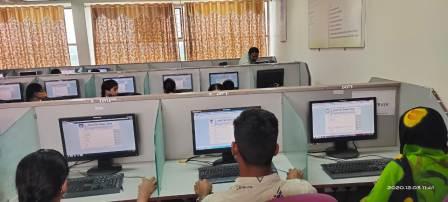
The purpose of mobile application development is to utilize a standards-based architecture that leverages existing IT infrastructure and maximizes return on investment to your business. This helps to extend enterprise data to mobile users with high security in a user friendly manner. While developing mobile applications, the developer should take care so as to make the application platform independent. This means that the application can run on any platform irrespective of the software or programming language in which it was developed. There are mobile applications written in Java, which run on iPad, Android, BlackBerry, iPhone, Symbian and Windows Mobile devices. Once the software is successfully developed, it should pass a testing phase where it is checked for proper functionality or any errors and after that, it is released on a large scale basis to the customers.

